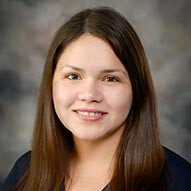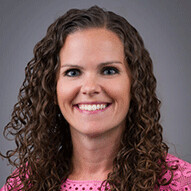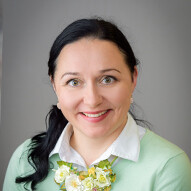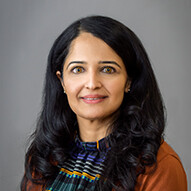Pediatric hemophilia
Children with hemophilia (he·mo·phil·ia) have blood that doesn’t clot properly. The condition can cause excessive bleeding after minor injuries and serious joint problems. In extreme situations, the disease can be life-threatening.
Children’s Health℠ is the only children’s hospital in North Texas designated as a comprehensive hemophilia treatment center (HTC) by the Centers for Disease Control and Prevention. This underscores our expertise caring for children with hemophilia, using the latest treatments to help them live full, active lives.
What is pediatric hemophilia?
Hemophilia is usually inherited, which means it’s passed down from parent to child through their genes. Children with hemophilia have missing blood-clotting factors or clotting factors that don’t work well. Clotting factors are proteins the body needs to seal a wound, stop bleeding and promote healing.
A child with hemophilia may bleed uncontrollably and for a long time after an injury or surgery. Even minor scrapes or gashes from a fall off a bike can be cause for concern. Some children may start bleeding for no reason, for example having frequent nosebleeds.
Risk factors
Hemophilia is a bleeding disorder that mostly affects boys (although girls can get it, too).
What are the types of pediatric hemophilia?
The type of hemophilia a patient has is determined by which clotting factor they are missing.
Hemophilia types include:
Hemophilia A (classic hemophilia) happens when kids have little or no clotting factor VIII. Hemophilia A is the most common type.
Hemophilia B (Christmas disease or royal disease) is the result of little or no clotting factor IX. Hemophilia B is sometimes called Christmas disease after Stephen Christmas, the first patient diagnosed with the disease in the early 1950s. It’s also known as royal disease because it affects royal families in England, Spain, Germany and Russia.
Hemophilia C is the result of little or no clotting factor XI. Hemophilia C is rare and doesn’t typically cause serious bleeding problems.
What are the signs and symptoms of pediatric hemophilia?
A child with hemophilia may have:
Heavy bleeding that won’t stop
Bleeding into joints (hemarthrosis) or muscles
Blood in urine (hematuria) or stool
Brain bleeds (aneurysms)
Excessive bruising
Frequent nosebleeds
Heavy periods in girls
Swollen, stiff, red and painful joints
Post-operative bleeding even with minor procedures like teeth extractions
How is pediatric hemophilia diagnosed?
To diagnose hemophilia or another type of bleeding disorder, your child’s doctor will perform a physical examination, review your child’s medical records and learn about your family’s health history.
Your child may also get one or more of the following tests:
Complete blood count (CBC) to measure the number of red blood cells that carry oxygen, white blood cells that fight infection and platelets that help clot blood.
Genetic tests to look for genes that cause bleeding disorders.
Time tests to measure how long it takes blood to clot.
Clotting factor tests to check for missing or low levels of clotting proteins.
Antibody tests to check for proteins that keep blood from clotting.
What are the causes of pediatric hemophilia?
About two-thirds of children with hemophilia inherit a changed (mutated) gene from a parent. Other children with no family history of the disease may develop the mutations that cause hemophilia spontaneously in the womb or during childhood.
How is pediatric hemophilia treated?
Hemophilia is a complex, lifelong condition. Hematologists (blood specialists) at our Bleeding Disorders Treatment Program see a high number of children with hemophilia every year and have deep experience treating kids with this condition. We create a custom treatment plan for each child, tailored to their unique needs. We offer the latest therapies, including clinical trials of innovative therapies available at select medical centers nationwide.
Hemophilia treatments include:
Factor replacement therapy to replace missing clotting factors. Clotting factors may come from blood donations (plasma-derived factors) or be made in a lab (recombinant factors).
Desmopressin acetate nasal spray or injection, a hormone that helps blood clot.
Antifibrinolytic medications to slow the breakdown of blood clots, especially during medical procedures.
Blood transfusions to replace significant amounts of lost blood.
Iron supplements for anemia, including pills, drops and intravenous (IV) infusions.
Pediatric hemophilia doctors and providers
Our comprehensive hemophilia treatment center brings together top hematology (blood) specialists to help your child.
 Jessica Garcia, MDPediatric Hematologist/Oncologist
Jessica Garcia, MDPediatric Hematologist/Oncologist Kathleen Ludwig, MDPediatric Hematologist/Oncologist
Kathleen Ludwig, MDPediatric Hematologist/Oncologist Ksenya Shliakhtsitsava, MDPediatric Hematologist/Oncologist
Ksenya Shliakhtsitsava, MDPediatric Hematologist/Oncologist Sisi Zheng, MDPediatric Hematologist/Oncologist
Sisi Zheng, MDPediatric Hematologist/Oncologist Ayesha Zia, MDPediatric Hematologist/Oncologist
Ayesha Zia, MDPediatric Hematologist/Oncologist